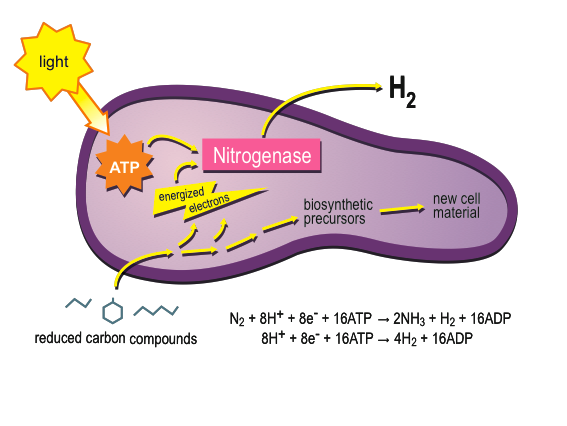 |
||||||
| School of Medicine • University of Washington • Box 357735 • 1705 NE Pacific St • Seattle WA 98195 | ||||||
| Harwood Lab: Hydrogen Production | ||||||
We use systems level approaches to dissect metabolic and regulatory networks necessary for nitrogenase-catalyzed hydrogen production by the photosynthetic bacterium Rhodopseudomonas. Rhodopseudomonas is an ideal platform to develop as a biocatalyst for hydrogen gas production because it is an extremely versatile microbe that produces copious amounts of hydrogen by drawing on abundant natural resources of sunlight and biomass. Hydrogen production requires the appropriate integration of dozens of metabolic reactions carried out in the context of a complex web of molecular interactions within the cell. We use proteomics, transcriptomics, RNA-seq, computational network analysis and C13 metabolic flux analysis to approach these problems. |
 |
|||||